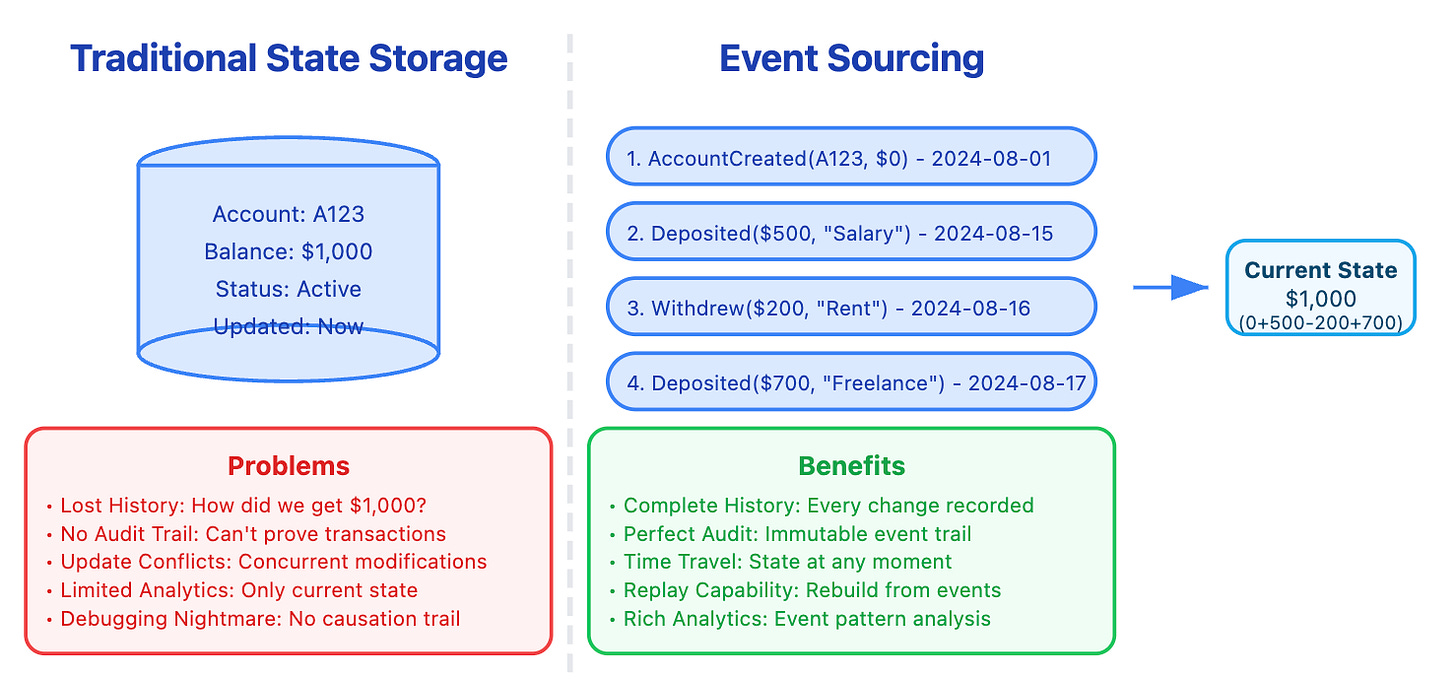When Your Database Becomes a Time Machine
Last month, a financial services company discovered that $2.3 million had mysteriously vanished from customer accounts overnight. Their traditional database showed current balances, but couldn't explain how they got there. The audit trail? Fragmented across multiple systems, incomplete, and impossible to reconstruct.
This scenario haunts engineering leaders because traditional databases are amnesiacs—they remember where you are, but forget how you got there.
Event Sourcing flips this paradigm entirely. Instead of storing current state, you store every event that led to that state. Your system becomes a time machine, capable of replaying history, understanding causation, and providing perfect auditability. But here's what most engineers miss: Event Sourcing isn't just about data storage—it's about fundamentally changing how you think about system behavior and business logic.
The State Reconstruction Revolution
Traditional systems store mutable state—your bank account balance is $1,000, overwriting whatever it was before. Event Sourcing stores immutable facts—you deposited $500, then withdrew $200, then received a $700 transfer. The current balance becomes a calculated view, not stored data.
This seemingly simple shift unlocks profound capabilities that transform how systems handle complexity, debugging, and business requirements evolution.
📊 [ IMAGE 1: Event Sourcing vs Traditional State Storage]


